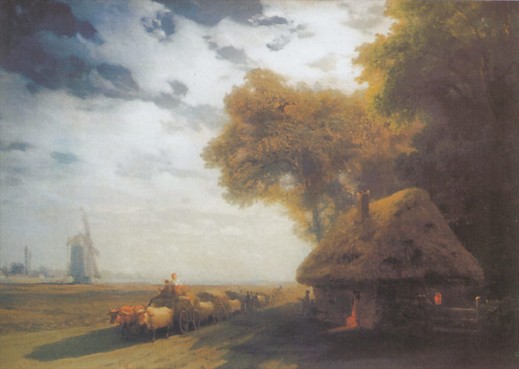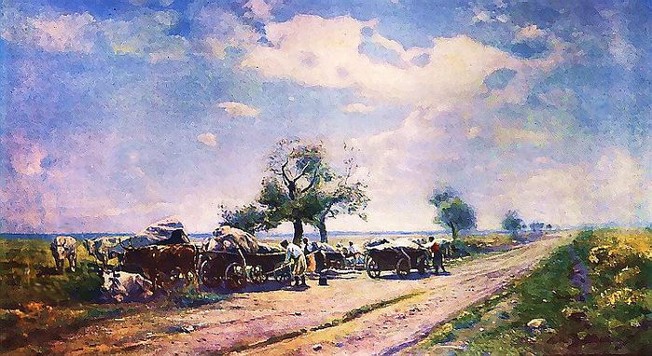Chumaks
Chumaks. Wagoners and traders who were common in Ukraine from the 17th to the mid-19th century. They brought by wagon salt from the Crimea and salted and dried fish from the Black Sea and Sea of Azov and the Don River. The name chumak is derived from the term chum, which refers to a wooden container used by the chumaks for transporting salt and fish. According to another theory a chum was a measuring scoop used by the salt traders when they sold salt. The chumak vocation was common among all classes of the Ukrainian population, particularly among the Cossacks and well-to-do peasants. The difficulties and perils of travel compelled the chumaks to organize themselves into trains of 10–100 wagons for the duration of a trip. In this way they could defend themselves from attack by the Crimean Tatars and robbers. The life and customs of the wagoners are vividly depicted in the chumak songs. From the 17th to the mid-19th century the chumaks controlled 50 percent of the salt trade in Ukraine. In the 1830s–1850s these wagoners imported about 41,000 tonnes of fish each year. They carried wheat, farm products, and manufactured articles south into the steppes, the Crimea, and Moldavia. With time the chumaks became the main carriers of bulk cargo. They played an important role in Ukraine's economy by promoting the development of internal and external trade. In the second half of the 19th century the wagoners' trade began to decline as railways were built and steppe pasturage for oxen shrank.
The chumaks' life is extensively reflected not only in Ukrainian folklore but also in literature by such authors as Taras Shevchenko, Marko Vovchok, Ivan Karpenko-Kary, and Mykhailo Kotsiubynsky. Painters were also attracted by the subject: Vasilii Shternberg painted Chumak in 1836; Ivan Aivazovsky, Chumak Wagon Train in 1885; Kostiantyn Trutovsky, Chumak in 1860; Arkhyp Kuindzhi, Chumak Route in 1875; Volodymyr Orlovsky, Chumaks Resting in the Steppe in 1884; and Serhii Vasylkivsky, Chumak Romodan Route.
Petro Odarchenko
[This article originally appeared in the Encyclopedia of Ukraine, vol. 1 (1984).]


.jpg)
.jpg)
